Quite often in houses, you can find a beautiful succulent called Sansevieria. The snake plant can be called differently because its versatility is impressive. In total, there are about 60 different types of snake plants. You can learn more about Sansevieria varieties in this article.
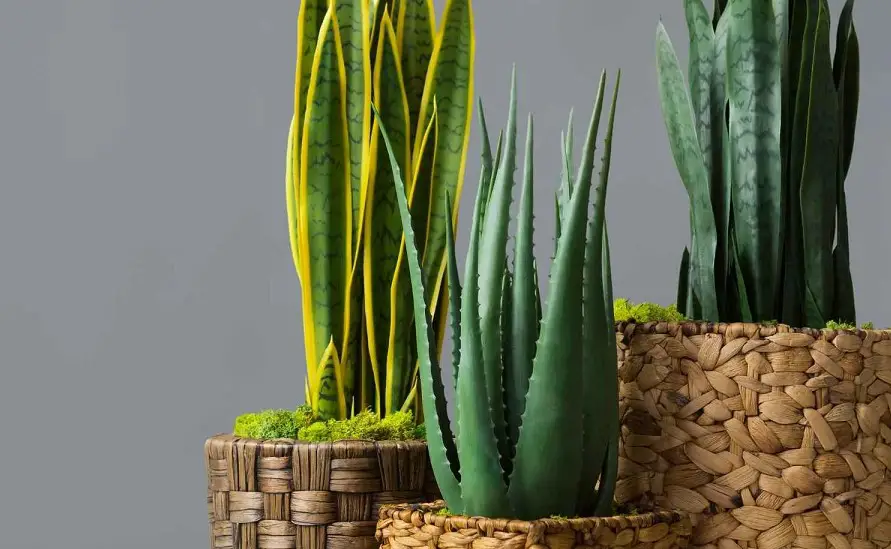
Snake plant features
Before embarking on Sansevieria varieties, you should familiarize yourself with the characteristics of the culture.
In the eighteenth century, an Italian botanist named Petanga brought a snake plant from Africa to Europe, which the local natives used for medical and domestic purposes.
The snake plant was studied, described, and included in botanical dictionaries under the name “Sansevieria” by natural scientists.
The plant owes its scientific name to the Neapolitan prince Sanseviero, who, being a patron of the arts, made a huge contribution to the development of botanical science.
The scientific description of the snake plant says that Sansevieria belongs to the Asparagaceae family and is a perennial, evergreen snake plant.
It has several hundred Sansevieria species and is found on all islands and continents in the tropical and subtropical zones.
By the 30-the 40s of the 20th century, breeders managed to breed almost six dozen Sansevieria varieties, which are still in great demand among gardeners today.
The secret of the success of this snake plant lies in its beneficial properties. For centuries, the inhabitants of Africa and Asia have used Sansevieria as a medicine.
The juice of the leaves of the flower contains antiseptic and anti-inflammatory substances that can heal wounds and burns.
Decoctions and infusions from the leaves help with diseases of the genitourinary system and are used as diuretics, choleretic, and even abortifacients.
Research conducted jointly with NASA as part of the Clean Air Project confirmed that some domesticated species of Sansevieria, due to the high concentration of saponins in the foliage, can purify the air.
So, a houseplant actively absorbs formaldehyde, carbon dioxide, and nitric oxide.
Snake plant has practical importance in African and Asian cultures.
Aboriginal people grow the flower to form hedges and make burlap, rope, and basket weaving.
The natural color of the leaves is dark green. Varietal snake plants are represented by a wide color palette. The leaves grow directly from the rhizome and give an annual increase in several plates.
In the warm season, the growing season begins, and the snake plant throws out a peduncle. The buds are collected in brushes.
The flowers are small, star-shaped, and have a strong vanilla aroma. Under natural conditions, flowering ends with the formation of fruits in the form of berries, which contain seeds.
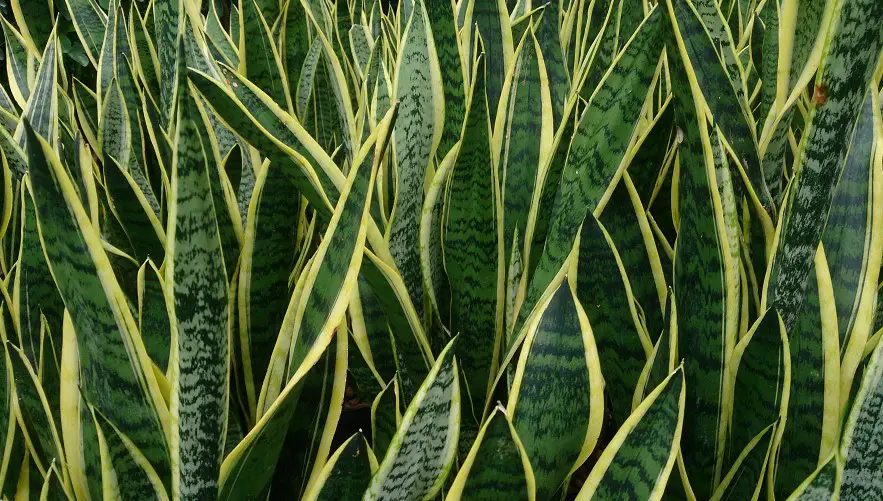
Sansevieria Trifasciata (Three-lane or Himalayan) and its varieties
This version of the Sansevieria Trifasciata snake plant is considered the most popular among gardeners.
Sansevieria Trifasciata originated in South Africa. Sansevieria Trifasciata began to be cultivated in houses only in the 13th century.
Sansevieria Trifasciata has a fairly powerful root system.
The dark green leaves of Sansevieria Trifasciata are massive and may vary in width, which varies from 1,2 to 3,9 in.
The length of the leaves in Sansevieria Trifasciata can reach 59 in. The surface of the leaves is glossy, and the tip is slightly pointed. The main tone is dark green. However, there are transverse stripes, which can be yellow, and cream.
You can often hear the question, how many varieties of Sansevieria are there? The number of Sansevieria species can reach 60.
During the flowering period, inflorescences are formed on the bushes, which can have different shapes.
Visually, they resemble a compact lily. The variety of Sansevieria Trifasciata has unpretentiousness in care, as well as endurance about environmental factors.
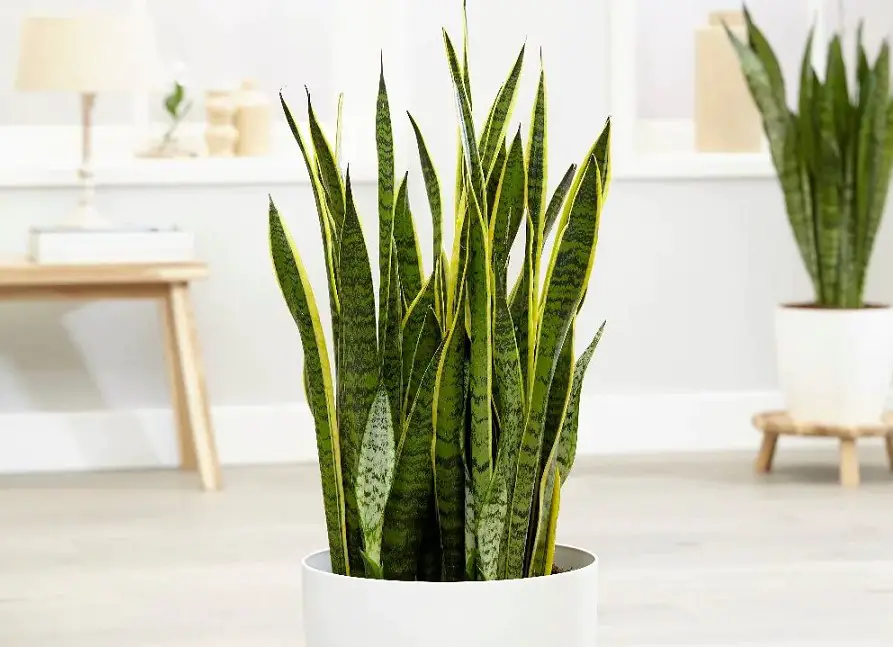
Laurenti snake plant
Many people wonder, what is the most common Sansevieria?
This snake plant variety was invented as one of the very first, so it is in great demand among gardeners. Differs in the big sizes.
The height of the bush can reach 59 in, and the width does not exceed 3.9 in.
The leaves are vertical and slightly pointed. It has a yellowish stripe along the edges.
Sansevieria Trifasciata Sensation Bentle or White
This variety of Sansevieria Trifasciata differs from the previous version in the color and dimensions of leaf plates.
The leaves grow up to 23 in. You can see a beautiful pattern on them, with alternating light green and dark green tones. There are often points in an emerald hue.
The snake plant has a slow growth rate.
However, it does not tolerate direct sunlight. Prefers moderate watering so that the root system is not damaged.
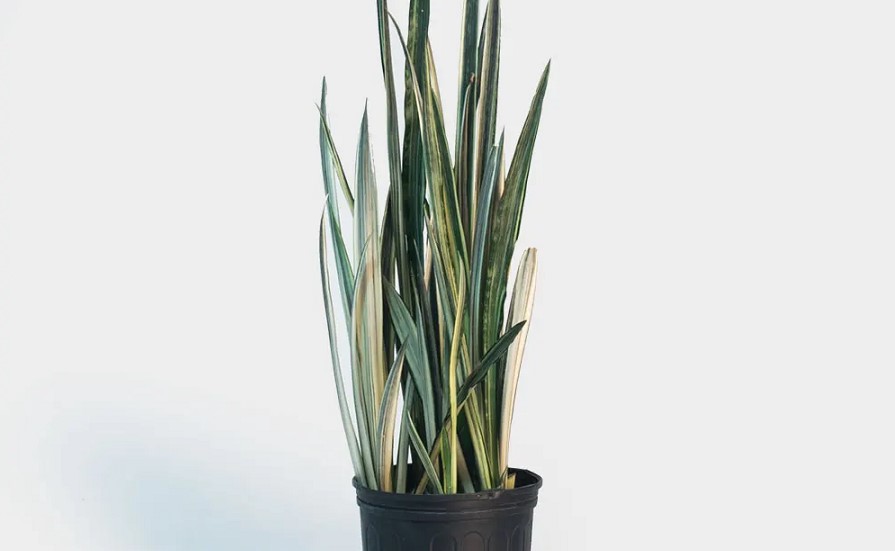
Futura snake plant
This variety of Sansevieria Trifasciata was recently introduced; however, it quickly began to gain popularity.
It has dense rosettes, which consist of a dozen sheet plates.
They have yellow edges and dark transverse stripes. The center of the striped snake plant is quite wide, and at the base and the top, they are narrow.
This snake plant is presented in several varieties, and the most popular are:
- Superba. Plant height varies from 15.7 to 17.7 in. The leaves are wide and quite dense. Their width reaches 3.9 in.
- Gold. Pretty compact variety. The leaves of the dwarf Sansevieria have a fairly large number of golden blotches.
- Black Gold. The leaves are thin and tall. They are dominated by a blue tint.
Sansevieria Trifasciata Robusta
Rosettes consist of wide leaves of a dark green color. They have dark stripes.
Therefore, the flower is often confused with relic snake plants. This snake plant variety has several hybrids, including:
- Black. Grows pretty fast. Leaves may change color. They combine a green tone with black dots that have a glossy sheen.
- Blue Sansevieria. Blue Sansevieria is characterized by dense leaves that are shaped like a spear. Their growth is horizontal and multi-tiered. The leaves of Blue Sansevieria have a blue tint and a pronounced coating of wax.
Nelson snake plant
These snake plant varieties have short leaf plates, which are painted in a rich dark green hue.
Velvet texture prevails in the dwarf snake plant. The leaves of dwarf Sansevieria Trifasciata form dense rosettes.
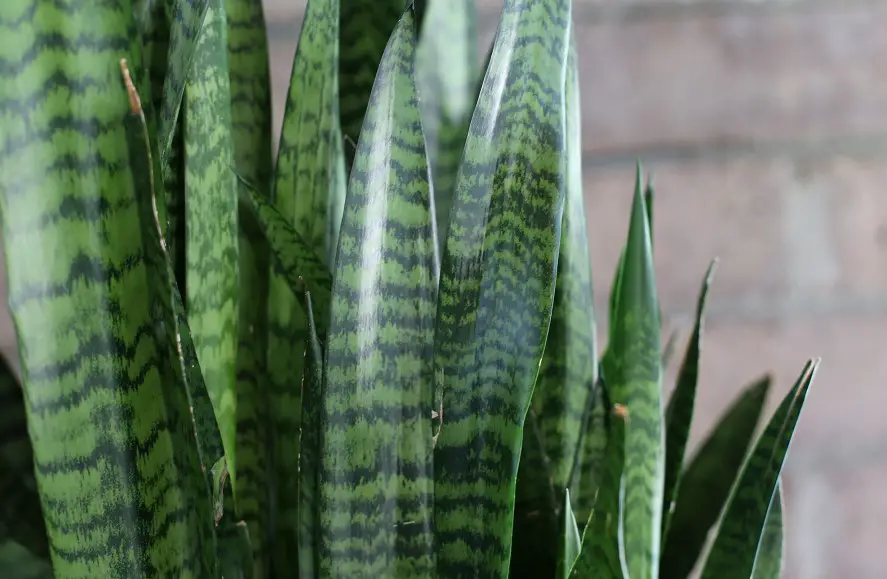
Sansevieria Trifasciata Moonshine or Silve Muns
This variety of Sansevieria Trifasciata is different in that the rosettes are formed underground.
Visually, the Moonshine snake plant looks more like algae.
The Moonshine snake plant differs in a rich light gray tint.
You can see the transverse stripes of a silvery hue. Therefore, gardeners often call the Moonshine snake plant “Moonlight”.
Compacta snake plant
This Sansevieria Trifasciata culture is more reminiscent of Laurenti; however, it has a compact size.
The leaf blades are thin, with slightly bent outwards. That is why the sockets look very disheveled.
The snake plant grows slowly. Varietal characteristics will be preserved only if propagated by the division of the root.
It is impossible to water the snake plants strongly, otherwise, the leaves of the dwarf Sansevieria will turn yellow and wither.
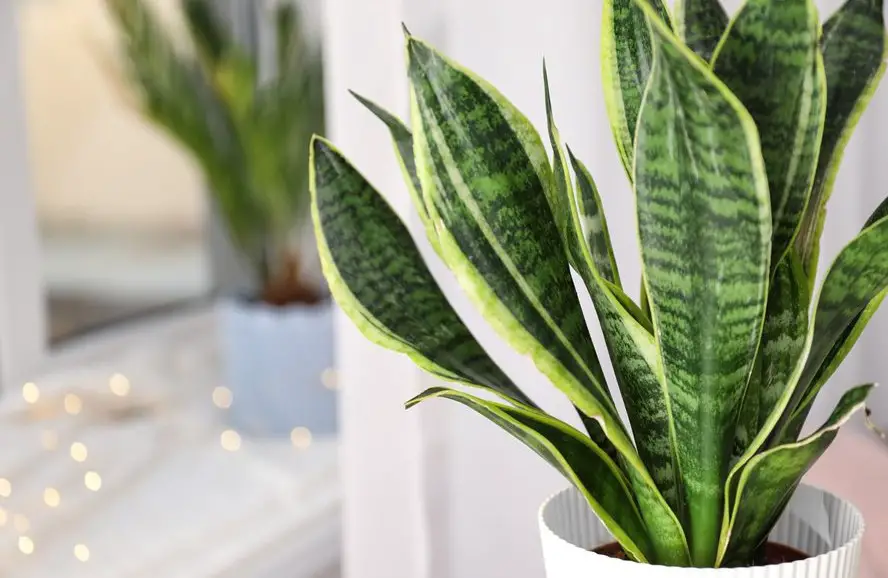
Silver Queen snake plant
This hybrid of Sansevieria Trifasciata has leaves with sharp tips, and they have a small thickness.
They differ in a gray-blue tint and have a silvery sheen.
There is a border along the edges, which practically does not differ from the main tone.
Sansevieria Trifasciata Twisted Sister
This variety of Sansevieria Trifasciata has been recently developed.
The rosette of leaves is low. The formation of Sansevieria Trifasciata Twisted Sister leaves is carried out on two shoots, so the snake plant is often called the “Twin Sister”.
The leaves of the Twisted Sister snake plant have a rich olive hue and a yellow edging.
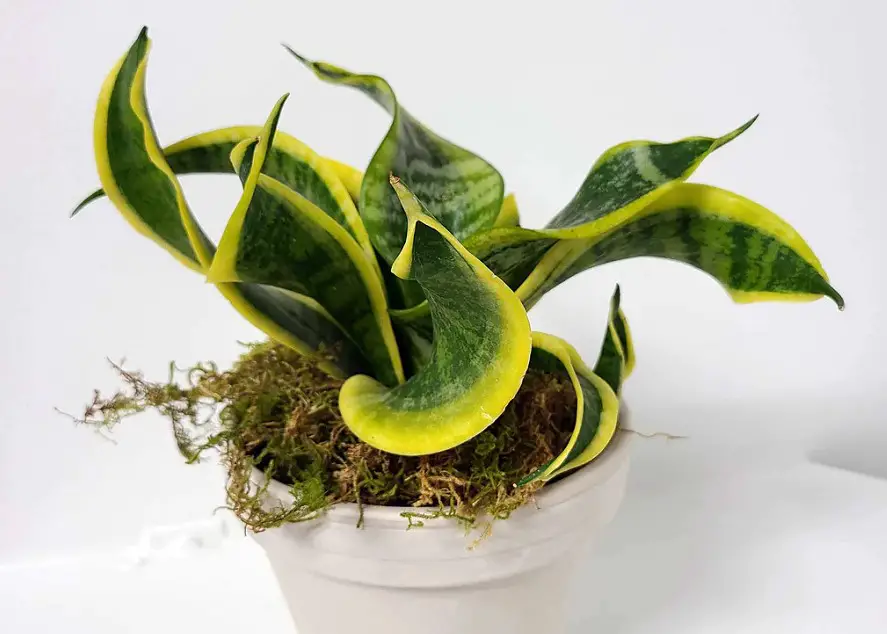
Gold Flame
This variety of Sansevieria Trifasciata is very decorative, and rosettes are formed from elongated leaves with sharp tips.
The outer part of the leaves is yellow and resembles fiery tongues. From the inside, there is a dark green tint with yellow edges. As the bushes mature, the amount of yellow pigment decreases.
Family of varieties Hanni (Hani)
This snake plant has a huge number of varieties that are bred artificially.
The first studies began to be carried out in the middle of the last century. This snake plant variety has compact leaf rosettes, which are more like a vase.
The leaves have pointed tops, which are slightly bent outward.
Cultures do not bloom. The first hybrid, which is included in this family, has dark green leaves with transverse light green stripes.
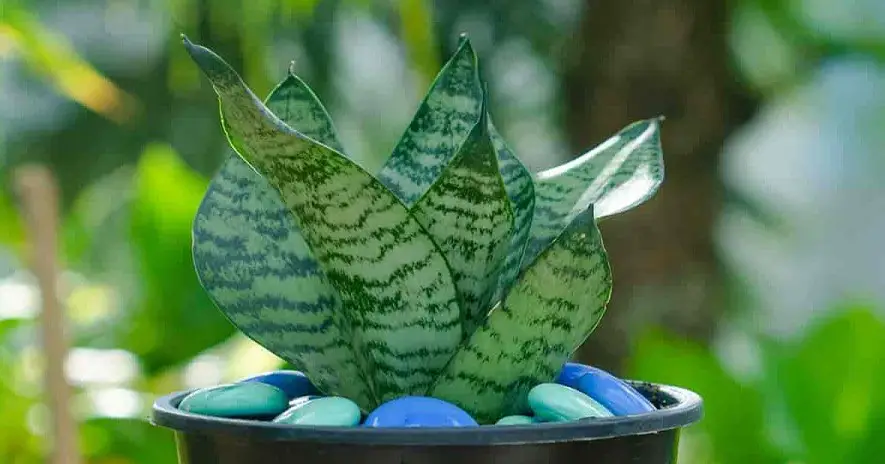
Varieties of Hanni
The Hanni snake plant was taken as the basis for the breeding of many varieties. However, the following options are most in demand among gardeners:
- Golden Hanni. The edges of the leaf plates are decorated with golden stripes. They are directed in a circle.
- Silver Hanni. The sockets are silver in color. The stripes on the leaves are dark and slightly blurred.
- Krista Hanni. Leaves spotted, green.
Hanni hybrids
Many hybrids have occurred from the Hanni variety, among which:
- Cream. The leaves are silvery green. A light stripe can be seen along the edges. It can be white or cream.
- Marginata. A yellow stripe can be seen along the edges of green leaves.
- Favorite. The leaves have a membranous yellow-green color.
- Streaker. The dark green leaves have yellow in the center. The edges are slightly turned to the sides.
- Jade. The dark green leaves are uniform.
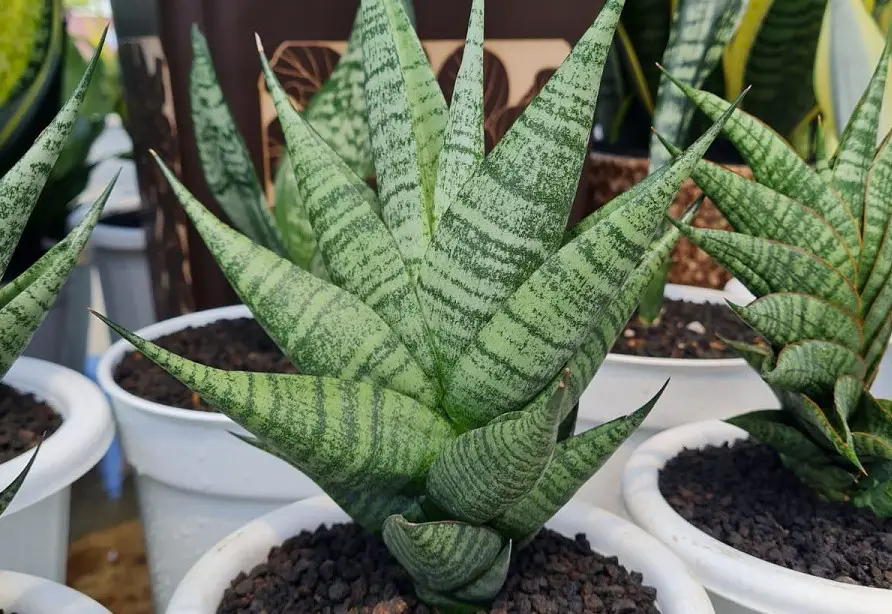
Other Sansevieria varieties
There are many other Sansevieria varieties, which may differ in external parameters, as well as in vegetation.
Zeilanika snake plant
The leaves are quite wide and can reach a length of 15.7 in.
You can see spectacular silvery stripes and dots on them.
This is a fairly popular variety among ordinary gardeners.
Craig’s Sansevieria
Some summer residents believe that this is one of the three-lane Sansevieria varieties.
However, there is no scientific evidence for this. These species have long leaves that are slightly pointed. Their surface is painted in a light yellow hue. There are partial stripes of green.
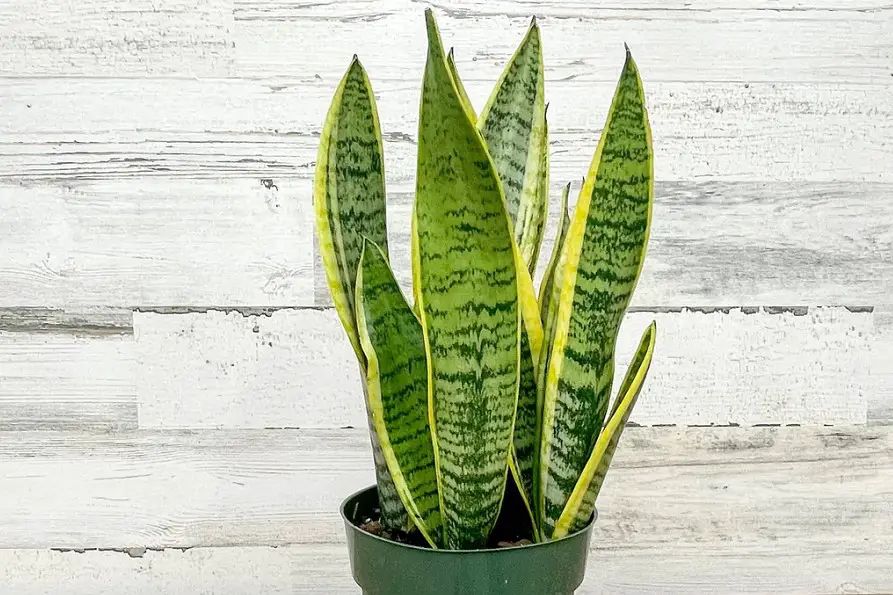
Grandis or Sansevieria Large
This is a rather large variety, which has coarse and wide leaf plates. Their length can reach 59 in.
The color of the leaves is almost uniform. You can very rarely notice a few dark stripes that have a zigzag shape. The edges are red.
Flowering is carried out by light gray buds.
They may be cylindrical or slightly swollen. Inflorescences are formed on a long peduncle, the length of which can reach 31.5 in.
Duneri snake plant
This culture was bred in West Africa. This is a pretty variegated snake plant. Rosettes consist of dozens of long and narrow leaves that have a light green tint.
Their length reaches 23.6 in, and the width is not more than 1.18 in. There is a dark pattern.
The root system is dense and quite developed. It has a green tint, due to which a dense curtain is formed.
On a small peduncle, several insignificant white buds are formed. The scent is reminiscent of lilac.
Liberian Sansevieria (Liberica)
The leaves in this culture are lanceolate and are collected in rosettes of 5 pieces.
The base of the sheet has a rich green tint, over which light stripes are applied. Along the edges, there is a pink or red stripe.
If you properly care for the culture, it will grow and develop well.
An elongated peduncle can be formed, the length of which is about 39.3 in. In the end, there is a light flower, which is distinguished by its rich aroma.
Eilenzis snake plant
This succulent was discovered in Somalia in 1973. It grows slowly and has rough curved leaf blades. They differ in the shape of a cylinder.
The surface of the cylindrical snake plant has a light blue tint, and there are transverse snow-white stripes. Green stripes run lengthwise.
Young snake plants may have channels on the leaves. After they begin to bend, forming a tube.
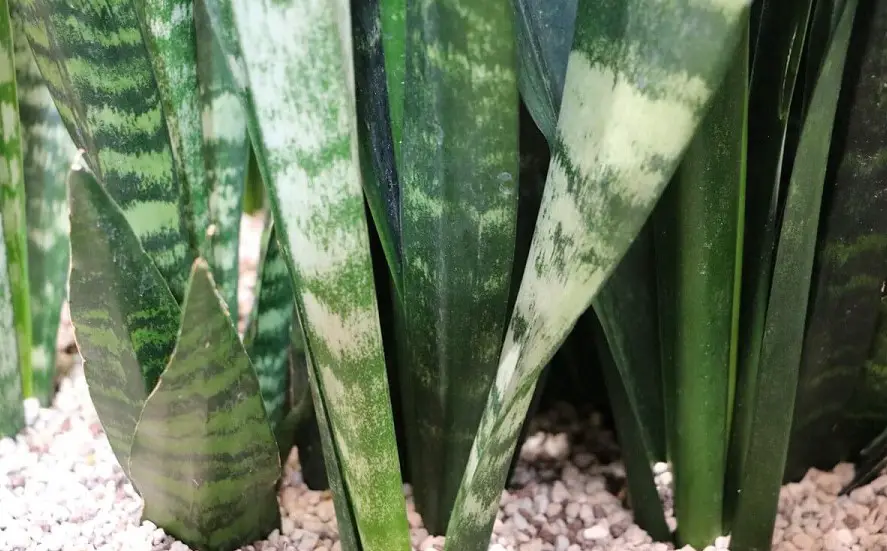
Sansevieria Cylindrica (Cylinder)
This is a rather original species, which has tubular leaves.
Sansevieria Cylindrica may vary in size. The ends are sharp.
Varieties Cylindrical Sansevieria
Today, this culture is in demand, and is presented in different cylindrical snake plant varieties:
- Mikado. This variety is less common. Sansevieria Cylindrica Mikado has leaves reaching 39 in. They are quite dense and are presented in a light green shade. You can see dark green stripes running transversely.
- Spike. Sansevieria Cylindrica Spike has pointed leaves that grow alternately from the trunk. They do not form a socket.
- Patents. The leaves are fan-shaped. Their length reaches 11.8 in. There are transverse and longitudinal stripes.
- Spaghetti. The rosette is formed by dense rounded leaves, the height of which is up to 20 in. The upper part of Sansevieria Cylindrica Spaghetti is slightly pointed.
- Velvet Touch. This is a new variety, for which Spaghetti was used. Sansevieria Cylindrica Velvet Touch has a bright border, which is located at the top of the sheet.
Forms that bloom beautifully
One often hears the question, which is the best variety of snake plants? The best option would be flowering options.
Sansevieria are characterized by fairly regular flowering, which lasts only 1 week. The buds open when it gets dark and have a rich aroma. Only 1 peduncle is formed on a leaf rosette.
Thanks to the beautiful flowering, the snake plants look original on the windowsill. However, several species have beautiful flowering.
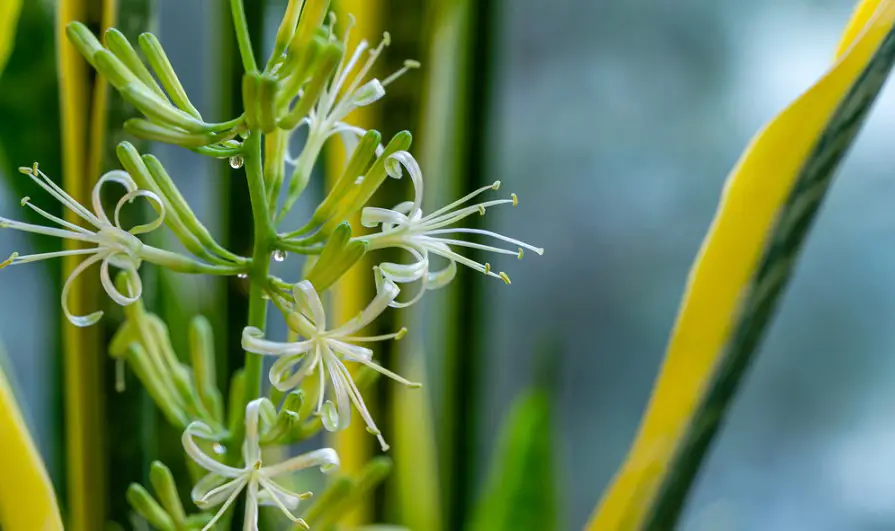
Sansevieria Hyacinthus
This species has a strong root system. Rosettes consist of 2-4 leaves. They have a rich green tint.
You can see beautiful spots and strokes on the surface. The length of the leaves reaches 39 in. Their center is slightly wide, and the leaves are narrow at the base.
There is a border that can be orange or white.
Flowering occurs in winter. Several buds are formed with a pleasant aroma on a peduncle, the length of which is 27.5 in. In shape and aroma, the inflorescence is more like a hyacinth.
Picks
Bushes of this species have rosettes, in which there are from 5 to 15 leaves.
They are ruffle-shaped and are characterized by a rich green tint.
The edging can be pink or brown, with small white patches.
Flowering is manifested in the formation of white buds. They can have beautiful stamens that have a rounded shape.
The inflorescences are beautiful, snow-white, so a beautiful contrast is created against a green background.
Inflorescences are more like stars in the night sky. Therefore, the culture is often called the “Star”.
Varieties of Sansevieria Pickaxe
This species includes many snake plant varieties, including:
- Beautiful. Differs in scarlet-brown leaves;
- Friends. Rosettes are dense and narrow, consisting of long leaves;
- What is the most rare Sansevieria? Silver Blue. It grows slowly and is extremely rare. This species is considered the rarest of all. The rosette is formed by dense leaves that have a bluish tint. It has a light silver finish.
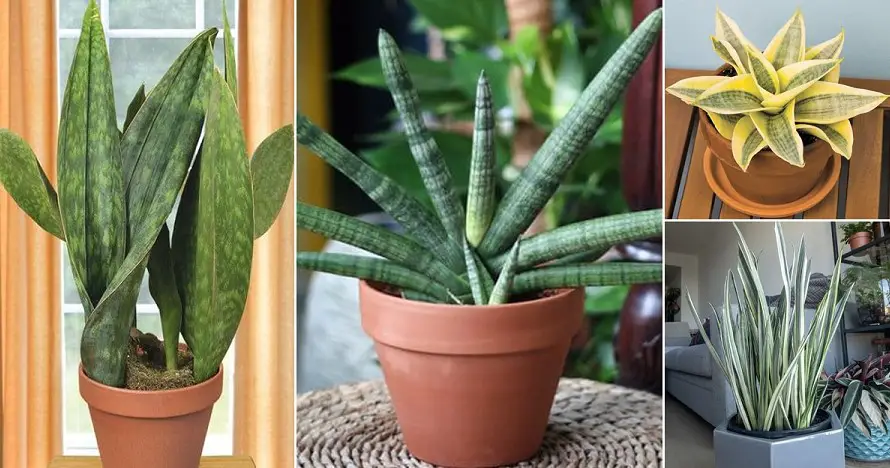
Stem forms of Sansevieria
Almost all types of snake plants have shortened shoots.
However, there are other types as well.
Stem Sansevieria deserves special attention, in which shoots can be of two types, namely:
- Vertical and short stems. They are completely covered by sheet plates.
- Aerial shoots on which rosettes of leaves are formed.
Sansevieria Graceful
These species have a rounded shoot, the length of which is 2.36 in. The rest of the leaves, which are only 11.8 in long, depart from it. The leaf plates are wide, oval, and rather dense. The upper part is pointed and rolled into a tube. The leaves may be green, with a grayish tinge.
Different offspring are formed from the base, which makes the snake plant more graceful. Flowering takes place in the off-season. Light buds are formed that do not have a rich aroma. The best option for a window sill.
Pinguecula snake plant
Differs in massive and thick sheet plates. There is a sharp tip that harmoniously contrasts with the edging. The formation of leaves is carried out on stolons, which depart in different directions from the trunk.
Bali snake plant
This culture has dense shoots, the length of which is 1.96 in. The leaves are rounded and shortened. Their length is only 7.8-19.6 in. The leaves of the dwarf snake plant have fused edges, and the tops are conical in shape.
The leaves of the dwarf Sansevieria plants have a rich green tint. They have silver stripes.
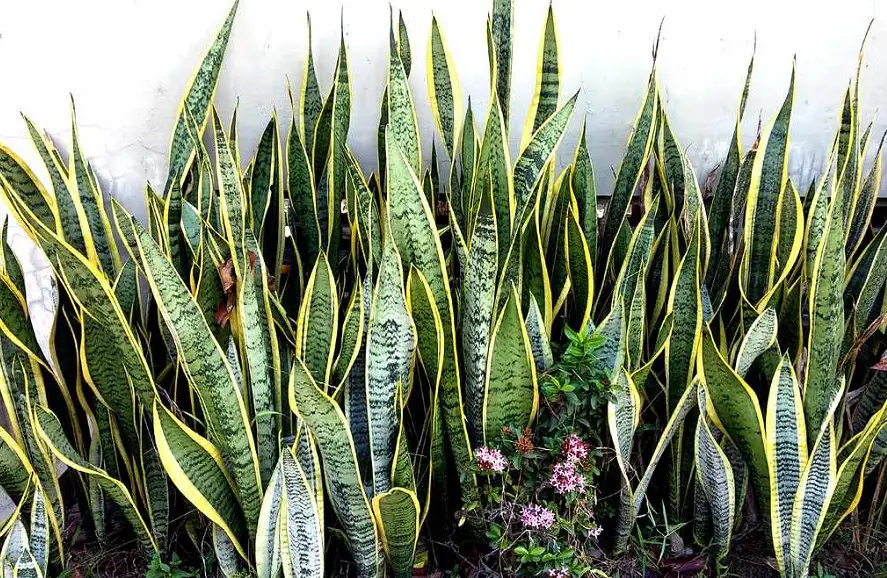
Sansevieria Francisi
This is a fairly popular species, which has stem forms. The shoot spreads, and dark green leaves depart from it. They are cylindrical. The leaves have sharp tips and can reach a height of 11.8-23.6 in. Most snake plants look beautiful in hanging pots.
Forms of Sansevieria with the illusion of escape
There are options in which there are no stems. Leaves are originally located on them, which imitate an escape. You can read more details about the best snake plant varieties below.
Ehrenberg snake plant
The height of the bush is only 19.6 in. The snake plant blooms and is characterized by active growth. The leaves are sword-shaped and grow horizontally. The length of the leaves can reach 39,3 in. If you grow a plant in a room, it will not be so huge. However, it looks very impressive.
Sansevieria Stake
This species differs from the previous one in that it has longitudinal dark green leaves. On the surface, you can see a marble pattern. The leaves are quite fleshy. Flowering is observed in the off-season and yellow-white flowers with a rich aroma form on the bushes.
Sansevieria care at home
Sansevieria is a very hardy snake plant, you can safely buy it as the first plant for the house. Even a not-very diligent and responsible child will cope with its cultivation. It is important to know that this snake plant tolerates dry indoor air well and loves moderate temperatures.
Priming
Ready-made soil for roses is suitable for growing Sansevieria, but loosening materials should be added to it – coarse river sand or perlite. You can also use soil for cacti and succulents.
Lighting
Young snake plants need diffused sunlight and adults put up with low light, so snake plant pot it can be placed on the floor, in places far from windows in the house.
However, the less illuminated the place, the weaker the pattern and color of the snake plant will be expressed.
Therefore, valuable snake plant varieties with unusual leaf colors are best grown in bright places.
If you grow Sansevieria plants in a shady place, then for its successful growth in spring and early autumn, rearrange the pot for a month on a windowsill in a southeast or southwest direction.
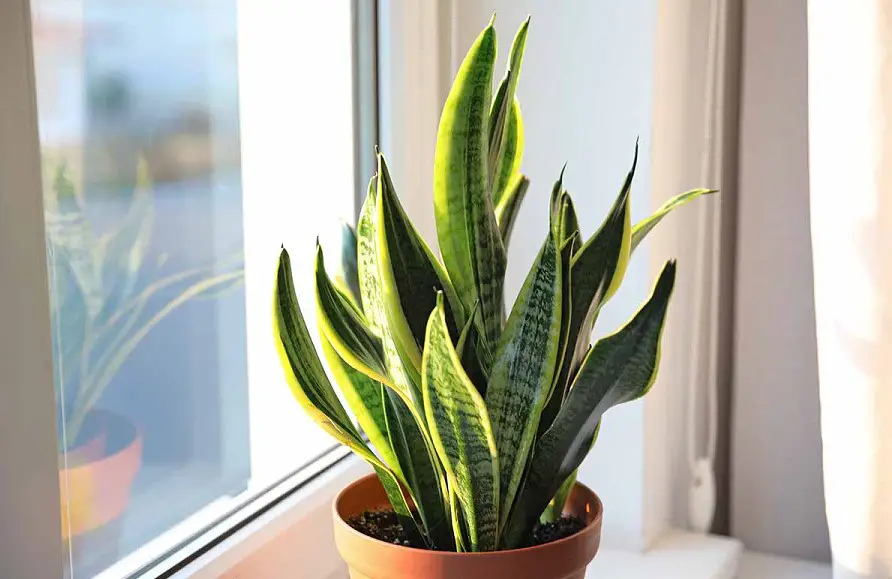
Humidity
Sansevieria plants do not like excess moisture. When watering, you need to ensure that drops of water do not fall into the middle of the outlet.
From spring to autumn, the snake plant is watered moderately, once a week, and immediately after watering, the water is drained from the pan. In winter, water is very rarely, when the soil dries at a depth of 1.18-1.57 in.
Sansevieria is not sprayed, but at least once a week the leaves are wiped with a damp cloth.
And this is necessary not for moisturizing, but for removing dust.
Snake plants can be taken out to the balcony or garden in summer, but be sure to protect them from direct sunlight and clean it into the house if night temperatures drop below 41 °F.
Fertilizers for snake plant
For the cultivation of Sansevieria, universal fertilizers for decorative and deciduous snake plants are used. You can find them in a store that sells everything for gardening.
Top dressing
Snake plants grow intensively if you use the top dressing in the spring-summer period with fertilizers for decorative and deciduous snake plants, but not more than 1 time in 3-4 weeks. Snake plants are not fertilized in winter.
Pruning
Snake plant is pruned only when the leaf is sick or damaged, and the rosette with the peduncle has also begun to die.
To do this, disinfect a sharp knife and carefully cut out a sheet or rosette at the very base. The cut is dusted with crushed coal. In the next 3 – 5 days do not water.
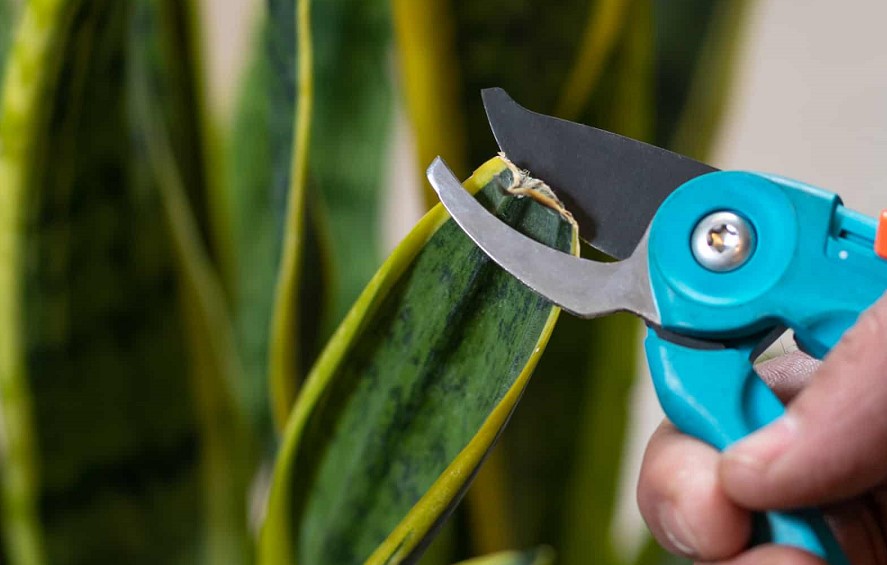
Reproduction of Sansevieria at home
Sansevieria plants propagate quite easily, not only by lateral shoots and division of rhizomes but also by leaf cuttings. In principle, it is possible to grow Sansevieria from seeds, but they are not sold, and it is rarely possible to get seeds yourself.
The division of rhizomes
It is produced during transplants, in the spring. Lateral shoots are separated by cutting with a piece of root.
All sections are dusted with crushed charcoal, and the rhizomes or shoots are planted in pots with ordinary Sansevieria soil. For 7 – 10 days, the pot is covered with a film, then the shelter is gradually removed. Water in the pan as the soil dries.
Cuttings
To grow Sansevieria from cuttings, take a leaf and cut it into pieces 3.93 in long, immerse the cuttings 2/3 in wet sand or perlite and cover with a jar.
Keep them warm in a bright place. Every day, the jar is lifted for ventilation for literally 5 to 7 minutes.
Water is only in the bottom of the pot. Roots grow for about 30 to 40 days, then buds appear, from which leaves develop. When 2-3 leaves appear, the snake plants are planted in permanent pots with fertile soil.
Sansevieria transplant at home
The first transplant – from a pot with transport soil, is carried out 14-30 days after purchase. Young snake plants are transplanted annually, in spring, in April.
From the age of over 5 years, transplantation can be done every 3 years, when the roots protruding from the pot are already visible.
For Sansevieria, ready-made soil for roses is suitable. Or they make up on their own from soddy land, peat, and coarse sand or perlite (3: 1: 1).
The pot needs a low and wide because the root system is powerful but superficial. Necessarily stable and heavy, preferably ceramic.
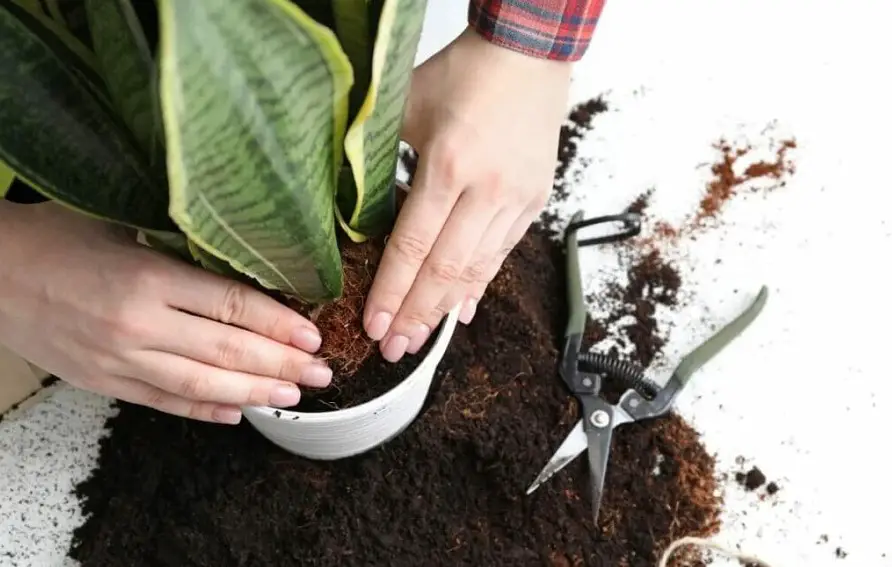
Sansevieria diseases
Sansevieria, despite its resistance, can be affected by some diseases.
Anthracnose
It appears on the leaves in the form of small sunken brown spots. If measures are not taken in time, the spots will begin to increase and the leaf will dry out.
The affected snake plant is removed from the pot and then washed in a fungicide. Then plant the snake plant in a new pot with clean soil, and treat it with the same remedy.
Root rot
This disease leads to the rotting of the roots and bases of the leaves. It is difficult to treat, so it is better to take care of prevention – moderate soil moisture and protection from pests.
At the first signs of the disease, transplant the snake plants into fresh soil, cut out the damaged areas, and disinfect the pot.
Fusarium
It manifests itself in the fact that small watery spots appear on young leaves of Sansevieria. Gradually, they grow and change color to red.
If action is not taken quickly, the snake plant will die. It is urgent to transplant into fresh soil, after washing the roots and disinfecting the pot.
Cut out all sore spots with a sharp knife and treat the sections with a fungicide. Processing is carried out three times, with an interval of 10 days.

Sansevieria pests
Sansevieria can also be affected by pests. More about them will be discussed below.
Mealybug
It is primarily found in the rosette and at the base of the leaves. First, the snake plant is washed in warm water to wash off the plaque. Then wipe the pest accumulation sites with a cotton swab dipped in alcohol.
Thrips
They settle on the underside of the leaves and feed on the sap of the snake plant. The leaves become grayish-brown with a silvery sheen. Fungicide treatment is required. It needs to be done twice, every 2 weeks.
Results
As you can see, there are many interesting snake plant varieties and types of Sansevieria. The choice depends on your preference.
- Why Are There Still No Tomatoes in My Tomato Plants? Let’s Fix the Issue! - July 13, 2023
- Water Propagation White Stuff on Roots: Everything You Should Know! - July 11, 2023
- String of Dolphins Drying Up: Solved! - July 11, 2023
